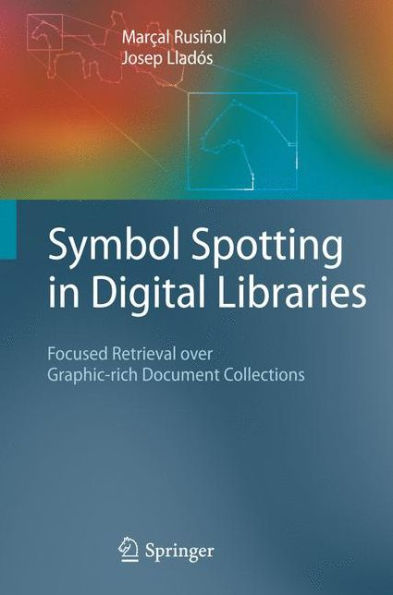Symbol Spotting in Digital Libraries: Focused Retrieval over Graphic-rich Document Collections
Pattern recognition basically deals with the recognition of patterns, shapes, objects, things in images. Document image analysis was one of the very first applications of pattern recognition and even of computing. But until the 1980s, research in this field was mainly dealing with text-based documents, including OCR (Optical Character Recognition) and page layout analysis. Only a few people were looking at more specific documents such as music sheet, bank cheques or forms. The community of graphics recognition became visible in the late 1980s. Their specific interest was to recognize high-level objects represented by line drawings and graphics. The specific pattern recognition problems they had to deal with was raster-to-graphics conversion (i.e., recognizing graphical primitives in a cluttered pixel image), text-graphics separation, and symbol recognition. The specific problem of symbol recognition in graphical documents has received a lot of attention. The symbols to be recognized can be musical notation, electrical symbols, architectural objects, pictograms in maps, etc. At first glance, the symbol recognition problems seems to be very similar to that of character recognition; - ter all, characters are basically a subset of symbols. Therefore, the large know-how in OCR has been extensively used in graphical symbol recognition: starting with segmenting the document to extract the symbols, extracting features from the s- bols, and then recognizing them through classification or matching, with respect to a training/learning set.
1129026890
Symbol Spotting in Digital Libraries: Focused Retrieval over Graphic-rich Document Collections
Pattern recognition basically deals with the recognition of patterns, shapes, objects, things in images. Document image analysis was one of the very first applications of pattern recognition and even of computing. But until the 1980s, research in this field was mainly dealing with text-based documents, including OCR (Optical Character Recognition) and page layout analysis. Only a few people were looking at more specific documents such as music sheet, bank cheques or forms. The community of graphics recognition became visible in the late 1980s. Their specific interest was to recognize high-level objects represented by line drawings and graphics. The specific pattern recognition problems they had to deal with was raster-to-graphics conversion (i.e., recognizing graphical primitives in a cluttered pixel image), text-graphics separation, and symbol recognition. The specific problem of symbol recognition in graphical documents has received a lot of attention. The symbols to be recognized can be musical notation, electrical symbols, architectural objects, pictograms in maps, etc. At first glance, the symbol recognition problems seems to be very similar to that of character recognition; - ter all, characters are basically a subset of symbols. Therefore, the large know-how in OCR has been extensively used in graphical symbol recognition: starting with segmenting the document to extract the symbols, extracting features from the s- bols, and then recognizing them through classification or matching, with respect to a training/learning set.
109.99
In Stock
5
1

Symbol Spotting in Digital Libraries: Focused Retrieval over Graphic-rich Document Collections
180
Symbol Spotting in Digital Libraries: Focused Retrieval over Graphic-rich Document Collections
180Hardcover(2010)
$109.99
109.99
In Stock

Product Details
| ISBN-13: | 9781849962070 |
|---|---|
| Publisher: | Springer London |
| Publication date: | 06/08/2010 |
| Edition description: | 2010 |
| Pages: | 180 |
| Product dimensions: | 6.40(w) x 9.30(h) x 0.70(d) |
From the B&N Reads Blog
